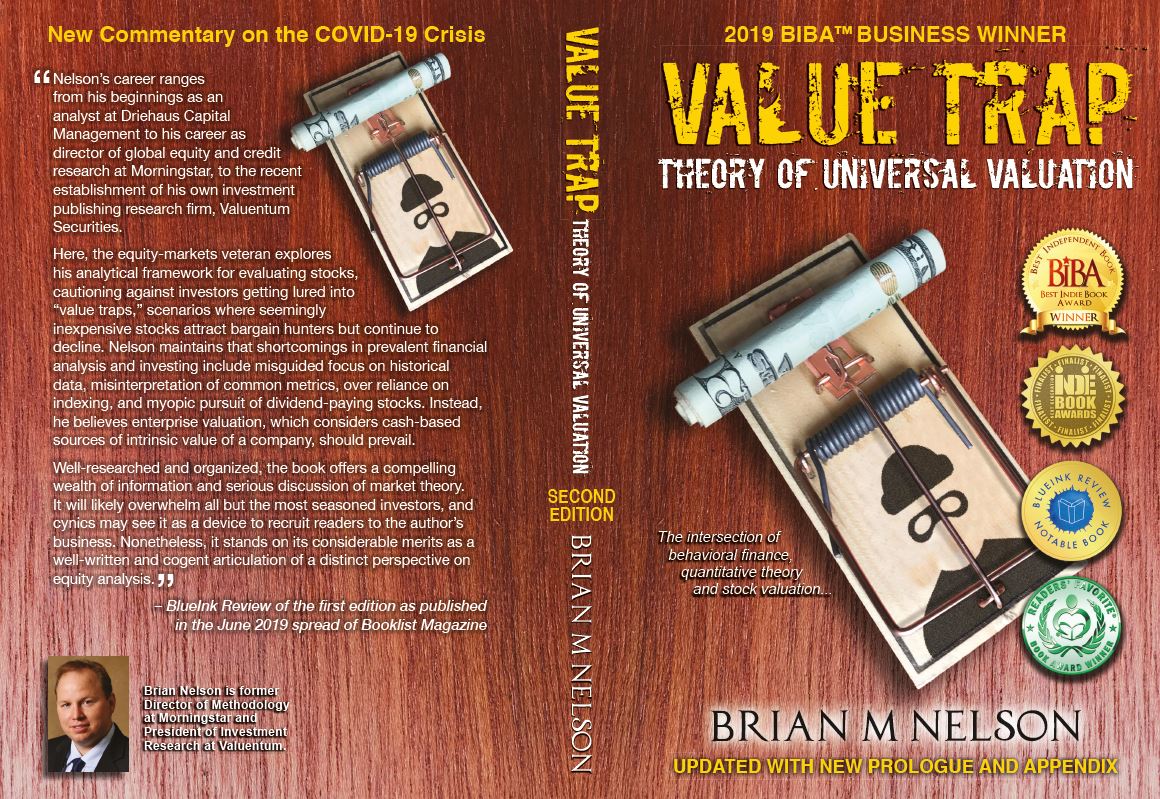Member LoginDividend CushionValue Trap |
Brain Teaser - Reflexive versus Reflective
publication date: Sep 19, 2024
|
author/source: Brian Nelson, CFA
 Dear members:
---Jason Zweig of the Wall Street Journal, wrote in his pioneering text, Your Money and Your Brain, a few fun examples of how sometimes the psychological process of anchoring and adjustment can trip us up.
---
In one notable example, Zweig wrote about how two psychologists Amos Tversky and Daniel Kahneman had asked volunteers to spin a wheel of fortune numbered from 0 to 100. The contestants didn't know that the wheel was rigged to produce either a 10 or a 65 for the experiment.
---
After spinning the wheel, the contestants were then asked whether the percentage of total United Nations membership made up of countries in Africa was higher or lower than the number that came up. For those that spun a 10, they guessed 25%; for those that spun a 65, they guessed 45%. The takeaway is that the number they spun on the wheel had nothing to do with the question, but it still had highly influenced the outcome. The contestants' answers anchored to the number they had just spun.
---
Let's now try another example, this one of my own creation. According to FactSet, as of March 10, 2023, the 5-year average of the forward 12-month P/E ratio for the S&P 500 was 18.5 and the 10-year average was 17.3. Now quickly, answer the following questions: Is a stock trading at a P/E of 1,000x expensive? Is a stock trading at a P/E of 2x cheap? Almost everyone will say: "Of course the stock trading at 1,000x earnings is expensive, and the one trading at 2x is cheap."
---
But let's think about this a little more. We really don't know much about these companies other than the earnings multiple provided, and all we have to make the decision about their respective valuations is a few historical anchors. Now let's trigger the reflective, or analytical side of our brains, with a couple examples from the book Value Trap:
---
1) A stock generates $1 in normalized earnings per share. It is trading at $1,000 per share, or at a P/E ratio of 1,000x. It has one share outstanding. It holds $1 billion in net cash, and otherwise has no liabilities or contingencies. Does the stock offer value at a 1,000x P/E?
---
A. yes
B. no
---
2) A stock has 10 shares outstanding. It generates $100 in annual EPS and is expected to do so into perpetuity. It is trading at $200 per share. It holds $1 billion in net debt. Assume earnings approximate enterprise free cash flow. The discount rate is 8%. Does the stock offer value at a P/E of 2x?
---
A. yes
B. no
---
If you answered 'yes' to the first one and 'no' to the second one, you're correct!
---
In the first question, the company holds an incredible $1 billion in net cash on the balance sheet. With just one share outstanding, it means that in buying that share you are basically trading $1,000 (the price paid to buy the share) for $1 billion in cash (what the company owns on the balance sheet). What a sweet deal! That 1,000 P/E shouldn't impact your decision at all.
---
Likewise, the second example has a company with a large net debt position. Though the firm generates $100 in annual earnings per share (and will do so going forward), the value ascribed to its operations based on future expectations of these earnings (which approximate enterprise free cash flow) is far less than its enormous net debt load, making its true intrinsic value negligible, if anything at all (the company is actually insolvent). The 2x P/E traps you into thinking the stock has value, but in reality, the company doesn't have much value at all.
---
So, what happened? Well, when we answered the questions quickly based on P/E data from FactSet, the reflexive (or intuitive) system of our brain completely overwhelmed the reflective (or analytical) system of our brain. We ended up answering the questions incorrectly because we forgot there's far more to valuation than just a P/E multiple. It wasn't until we paused to trigger our reflective system with more information about these companies that we overcame the cognitive bias of anchoring--in this case the anchor to the average market P/E multiple.
---
Concluding Thoughts
---
Valuation multiples tend to trigger the reflexive side of our brain, and we process the multiples through anchoring. On the other hand, enterprise valuation, or the process required to answer the questions correctly, shows that our reflexive process can be quite incorrect at times. In fact, cognitive biases such as anchoring can completely trip us up into missing out on truly undervalued companies that may have high P/E ratios while baiting us into value traps with low P/E ratios. I hope you found this article helpful!
---
---
Kind regards,
---
Brian Nelson, CFA
President, Investment Research
Valuentum Securities, Inc.
brian@valuentum.com
---
It's Here!
The Second Edition of Value Trap! Order today!
 -----
---
Tickerized for holdings in the QQQ. This article was originally published September 16, 2020.
---
Brian Nelson owns shares in SPY, SCHG, QQQ, DIA, VOT, RSP, and IWM. Valuentum owns SPY, SCHG, QQQ, VOO, and DIA. Brian Nelson's household owns shares in HON, DIS, HAS, NKE, DIA, RSP, SCHG, QQQ, and VOO. Some of the other securities written about in this article may be included in Valuentum's simulated newsletter portfolios. Contact Valuentum for more information about its editorial policies. Valuentum members have access to our 16-page stock reports, Valuentum Buying Index ratings, Dividend Cushion ratios, fair value estimates and ranges, dividend reports and more. Not a member? Subscribe today. The first 14 days are free. |


0 Comments Posted Leave a comment